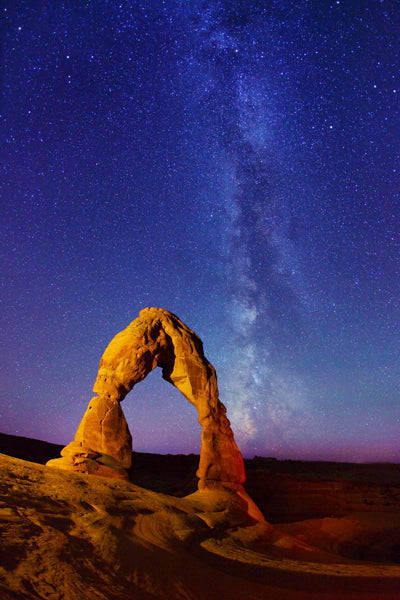Royce Bair has been a professional illustrative photographer since 1973, and an international lecturer on photography since 1982. His work has appeared in National Geographic, The Smithsonian, and on the covers of numerous books. As a photographer, writer, and entrepreneur, he has built and sold five photo-related businesses. He and his wife, Linda, are now shooting stock photography while they continue to share their knowledge and experience through workshops and blogs.
Royce Bair: "When I was 17, my father took me on a backpacking trip to the Eagle Cap Wilderness in northeastern Oregon. He let me borrow his 1950's, all-manual, Argus C3 35mm camera. When the Kodachrome slides came back, I was hooked on landscape photography! By chance, I had taken a few photos early in the morning and late in the afternoon, and noticed that the angular light was much more interesting than the light of midday. When I became a professional photographer, over 30 years ago, I started doing NightScape photography as a way to give me greater lighting control over my landscapes. I was also trying to prove to my commercial clients that if I could light up places like Rainbow Bridge with battery-powered lights, I could handle their industrial location assignments with ease. It worked, and a year later, I also received an 8-page spread in American Photo magazine. Since then, many have copied my style. In those days, I did long,10-minute exposures with star trails in the sky. Now, I do shorter time exposures (under 30 seconds) that include only points of light, i.e. star constellations and the Milky Way. Unfortunately, I now have less time to fire off all my lights, so more planning and greater synchronization is required!
All of my starry NightScapes are done in one shot. I include light painting when I think it helps in the recognition of the landscape. My stationary key light is almost always off-camera, several hundred feet away, as was the 2-million candlepower halogen I used in this photo. I added a moving, orange filtered, 1-million candlepower spotlight from the camera position to help separate the right fin of the arch from the background. All light painting is done during the single time exposure. My exposures are always under 30 seconds in order to keep the stars as points of light and not blurred (i.e. star trails). Because daylight is 40 million times brighter than starlight, I prefer full-frame sensor cameras that produce lower noise when using high ISO's. This exposure was with the Canon EOS 5D Mark II, with the Canon EF 15mm f/2.8 Fisheye Lens @ f3.5 for 30 seconds, ISO 6400. More NightScapes and how-to links can be found on my YouTube video."
RELATED ARTICLES
How I Got That Shot - Marc Muench
How I Got That Shot - Will Pryce
Focus on Photographers - Tom Till



